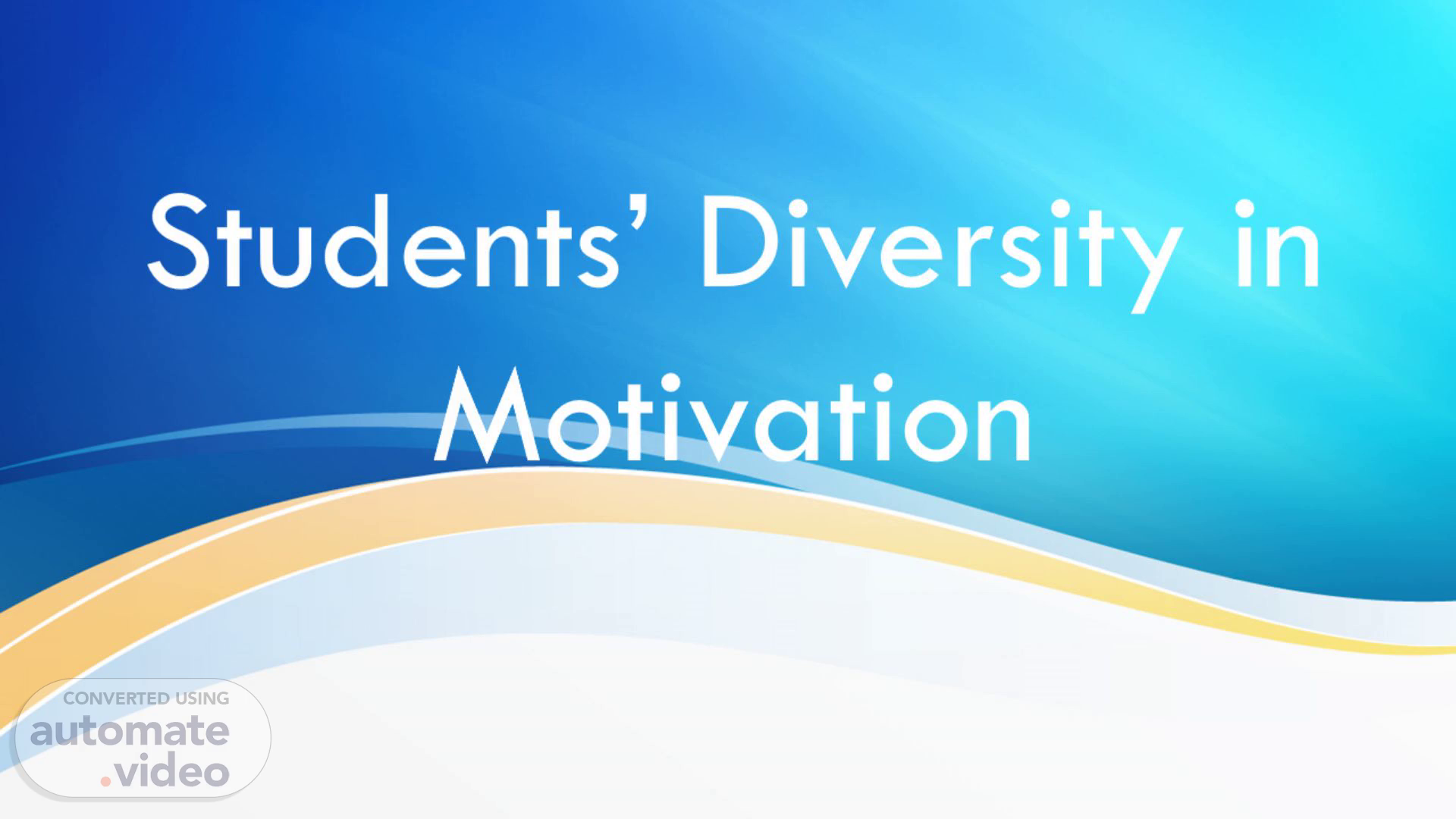
Students' Diversity in Motivation
Scene 1 (0s)
Students’ Diversity in Motivation.
Scene 2 (6s)
State and explain two principles on the social and cultural influences on motivation. C.
Scene 3 (23s)
State and explain two principles on the social and cultural influences on motivation. C.
Scene 4 (41s)
Students’ Diversity in Motivation.
Scene 5 (51s)
Students’ Diversity in Motivation. Students motivation is most likely to vary as a function of age, gender, culture and socioeconomic background and special educational needs. Encompasses the wide range of factors that influence why students engage in learning, how they approach academic tasks, and the extent to which they are driven to succeed..
Scene 6 (1m 11s)
Diversity. The quality or sate of having different forms, types, ideas, etc. The state of having people who are different races or who have different cultures in a group..
Scene 7 (1m 24s)
Motivation. The act or process of giving someone a reason for doing something..
Scene 8 (1m 32s)
Research Findings.
Scene 9 (1m 40s)
Young children often want gain teachers approval to be motivated while the older ones are typically more interested in gaining the approval of peers..
Scene 10 (1m 53s)
Elementary students tends to attribute their success to effort and hard work..
Scene 11 (2m 4s)
Their are different motivational patterns for students belonging to ethnic communities..
Scene 12 (2m 16s)
Females are now likely than males to have a high need for affiliation..
Scene 13 (2m 29s)
Students from low-income families are among those likely to be risky of failing and dropping out of school..
Scene 14 (2m 41s)
Students with special educational needs show greatest diversity in motivation..
Scene 15 (2m 51s)
2 Principles to consider regarding social and cultural influences in motivation.
Scene 16 (3m 2s)
Students are most likely to model the behaviors they believe are relevant to their situation..
Scene 17 (3m 13s)
Students develop greater efficacy for a task when they see others like thmselves performing the task successfully ..
Scene 18 (3m 24s)
Group Members. Fritz Lee Langgoyan. Jimson Layugan.